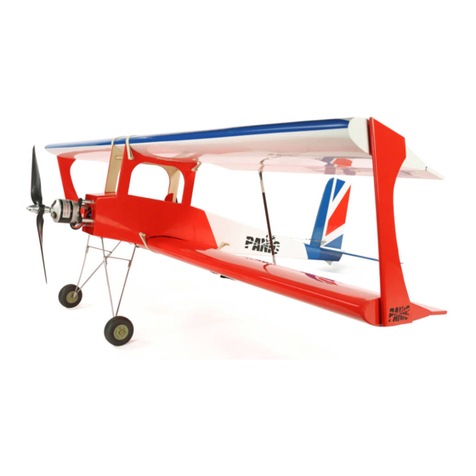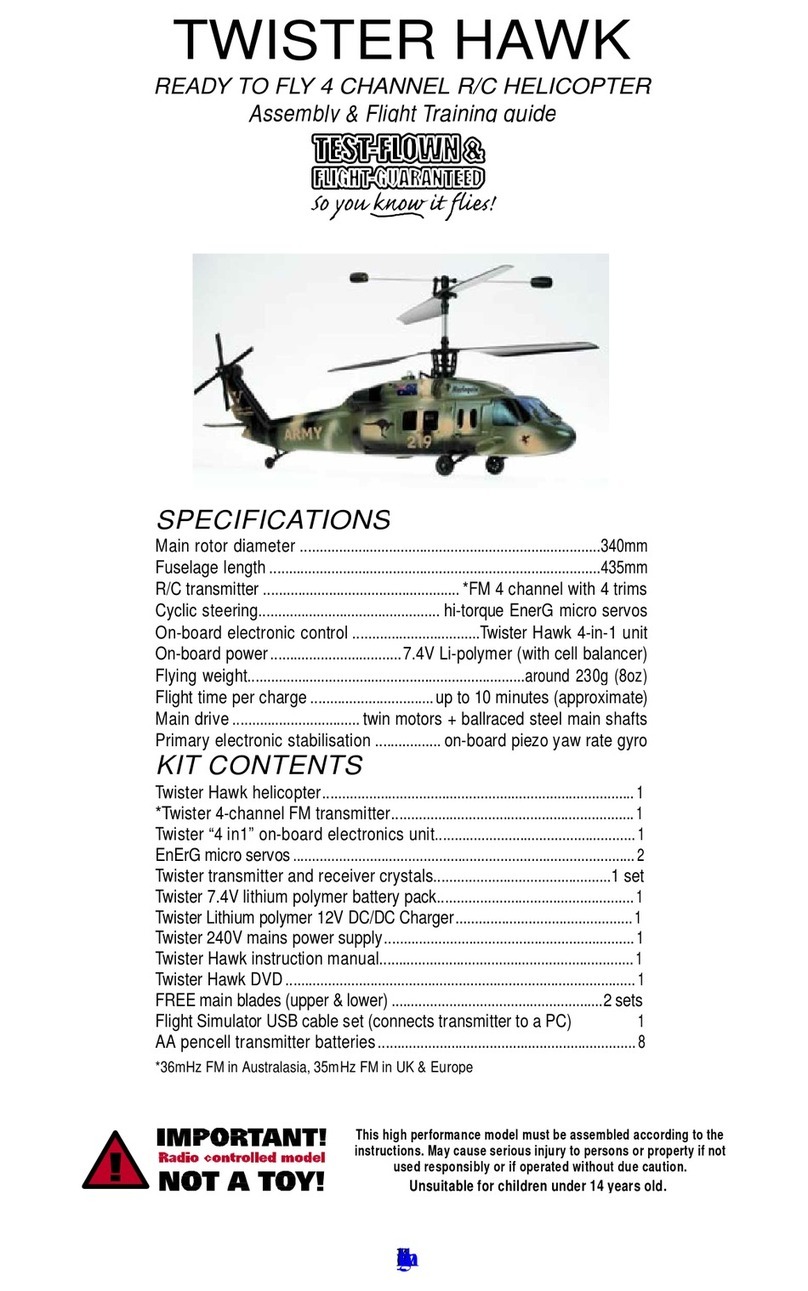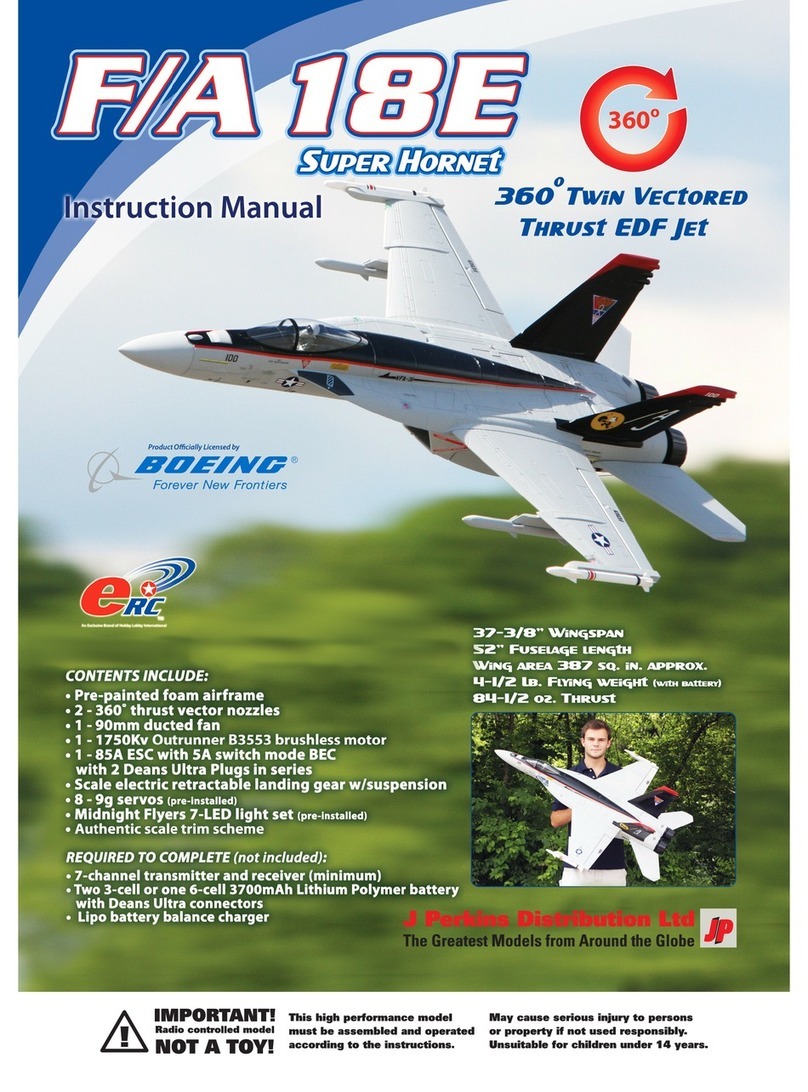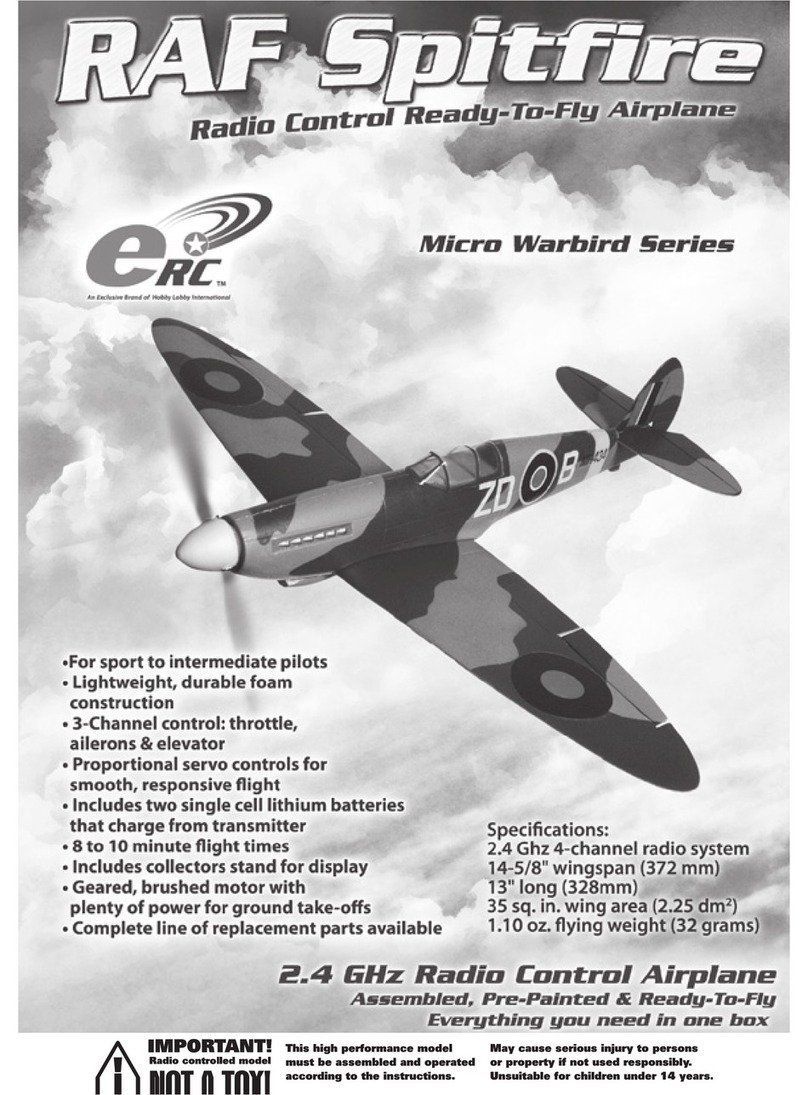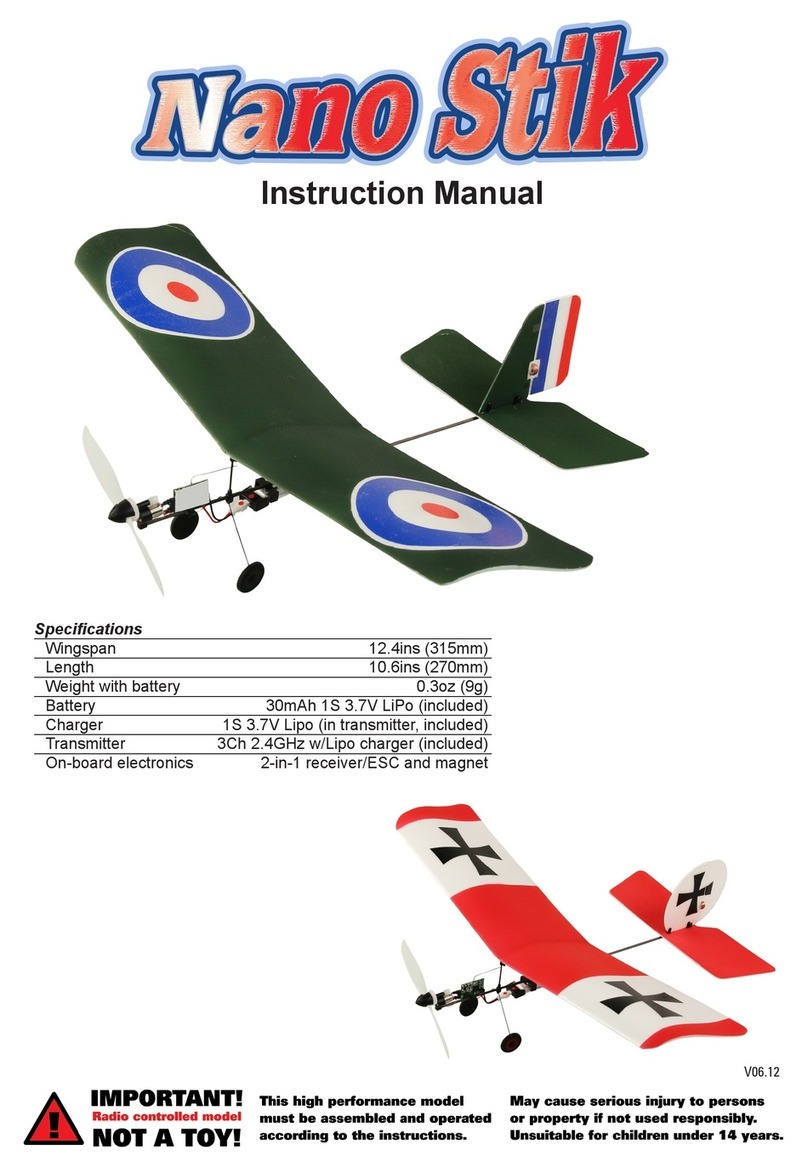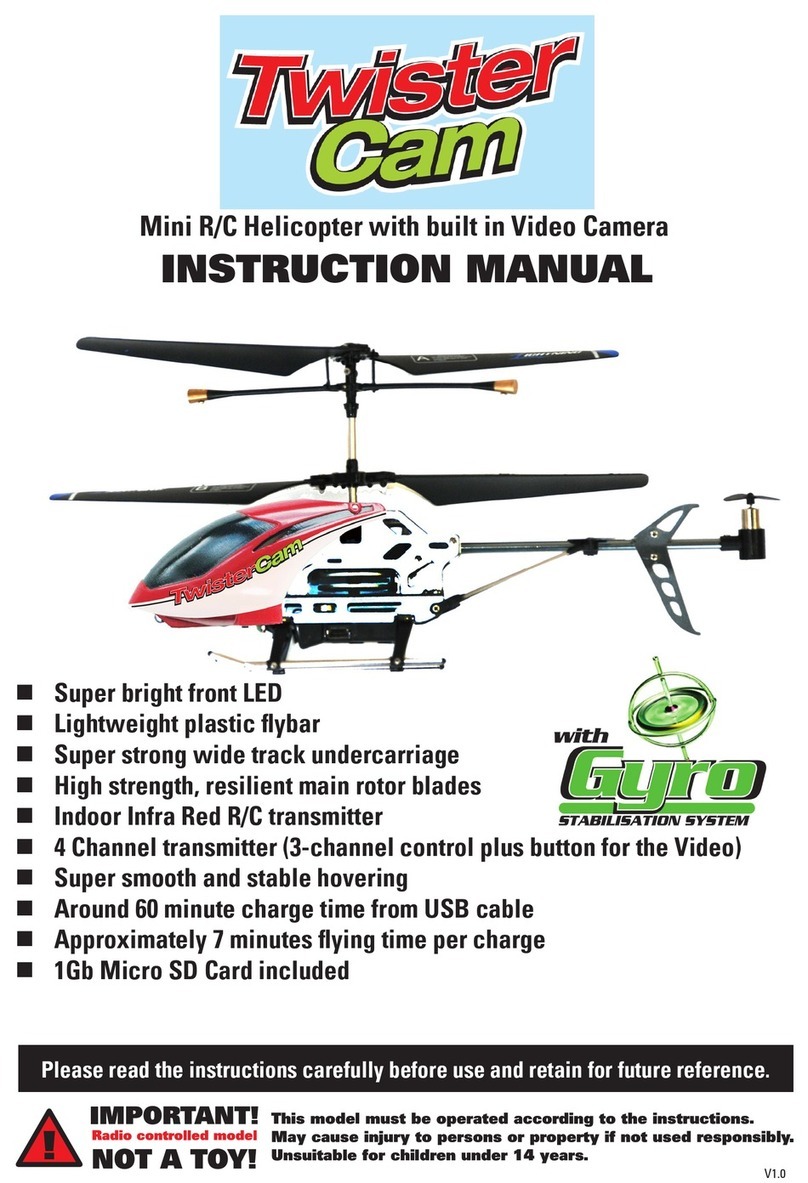to settle back onto the floor.
You will notice that as the helicopter breaks free
from the floor its nature changes and it may attempt
to accelerate in an unforeseen direction. Be
prepared for this natural consequence of leaving
the friction of the floor for the 'friction-free' realm of
'real flying'!
Most people feel they have just limited control when
they leave the safety of the floor for the first time.
However, with practice, you will find that you are
able to make more and more of the correct control
commands required to keep your Twister CP V2.1
upright and that the hops become longer and higher.
It is important during these stages to keep moving
forward by applying a small amount of forward trim
to tilt the rotor disc forwards.
Always make sure you watch the nose of your
helicopter–not the tail. The gyro will attempt to
keep the tail straight for you but you will have to use
the tail control to swing the nose of the helicopter
straight as you make progress across the floor.
Keep practising and you will find that your flights
will become longer.
Also please note that, depending on the size of
your room, some control instability may be felt as a
result of the air circulated around the room by your
helicopters down draft. If you find this off-putting,
we suggest that you land and let the air settle.
Please be aware that a model helicopter in the
hover–regardless of design–will never stay still!
A helicopter will always require some level of input
to stop drift or a tendency to turn or climb. This is
not a sign of something faulty with the helicopter,
but is in the nature of a hovering helicopter.
As you become more familiar with your helicopter,
you will find that your developing hand/eye co-
ordination skills will enable you to correct any drift,
roll or yaw almost as soon as it starts, and this will
make your flying smoother and less jerky.
By this stage in your training you should be able to
manage hops at a height of between 10 and 30cm
with duration of 5-10 seconds per hop. Flights will
become longer and easier as your co-ordination
and understanding of flight dynamics develop.
STEP 5–HOVERING AND
MANOEUVRES
By now you will have realised that in order to
maintain flight, brief control inputs or 'nudges' are
required–plus enough practice to manage operation
of all the primary flying controls successfully
together.
As your co-ordination and anticipation improves,
you should be able to reduce forward speed when
making 'hops', thereby bringing your helicopter into
a hover.
Practice hovering until you feel confident with the
basic handling of your helicopter.
Next, you should start experimenting at rotating
(yawing) the helicopter slightly to the left or right
using the tail rotor (yaw) controls–but only proceed
to this stage when you have mastered the hover!
From the hover, yaw the model a few degrees
left and then back to straight ahead–always
remembering to watch the nose. Practice yawing to
left and to right until you feel confident.
Next, practice crabbing your Twister CP V2.1 to
the right and left using cyclic controls. Proceed as
follows:
From the hover, briefly 'nudge' a small amount of
right roll. Your Twister CP V2.1 will start a drift to the
right. Put in a small amount of opposite roll to halt
the drift, then a small amount of left roll to start a
drift to the left. You will probably need to keep the
tail straight using tail rotor whilst doing this. Always
be ready to correct the drift by using opposite roll.
If you get into trouble at any stage, reduce the
throttle, land, change you trousers and try again.
STEP 6–BEYOND THE HOVER
As you become more proficient with your helicopter
you will want a larger space so you can really start
to fly around instead of hovering about all day.
If you do fly outside, please remember that any wind
will affect the performance of your Twister CP V2.1.
Please keep this in mind if you do fly outdoors and
don't be too surprised if, while flying your model, it
suddenly climbs or drops without you making any
input. This can be caused by a breeze or even a
'thermal' coming through.
A training undercarriage can be a huge help by
providing your Twister CP V2.1 with a wide track
and a degree of cushioning to aid stability and
therefore help prevent 'tip-overs'. See the parts
listing at the end of this manual. Another useful
training aid is a computer flight simulator which can
greatly enhance and speed up the learning process.
In addition a simulator is great for teaching you
“nose in”. This is when the nose of the helicopter
is pointing at you and where some of the controls
become effectively reversed–which can catch out
both experienced and novice pilots alike!
GOOD LUCK AND HAPPY FLYING!
